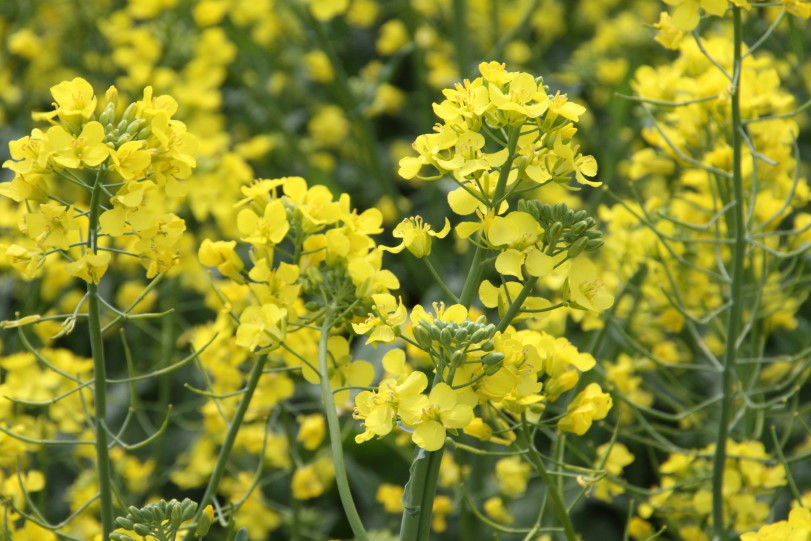
Agricultural News
Producers Need to Watch Out for Diamondback Moths in Seedling Canola
Wed, 12 Oct 2011 13:59:54 CDT
 It never seems to fail. We have seen a "first" almost every year that that canola has been grown in Oklahoma. This year, it is the "attack of the diamondback moth". We received reports of some canola fields that were infested with high enough diamondback moth populations to actually kill a whole stand. This infestation on seedlings has been reported "rarely" in North Dakota, but it is uncommon, and is a first for us.
It never seems to fail. We have seen a "first" almost every year that that canola has been grown in Oklahoma. This year, it is the "attack of the diamondback moth". We received reports of some canola fields that were infested with high enough diamondback moth populations to actually kill a whole stand. This infestation on seedlings has been reported "rarely" in North Dakota, but it is uncommon, and is a first for us.
Diamondback moths are found worldwide. The moth is a small, gray and brown moth that measures ½ inches. When resting, the wings fold over the body in a roof like position. Male moths have three diamond-shaped markings on their folded forewings, which is how it got its name. Female moths lay oval flattened eggs measuring 0.44 mm in groups of 1-8 eggs which will hatch in 5-6 days. One female will lay an average of 150 eggs.
Newly hatched larvae are light green with a green head, and become progressively darker as they mature. They develop through four instars and measure about ½ inches long when full grown. Larvae create a loose, silken cocoon that they attach to the plant and pupate in.
They can complete a lifecycle in about 32 days, depending on temperature. Typically a scout will find all life stages at the same time within a field. One distinct feature of this caterpillar is that it will thrash violently back and forth and drop from the plant on a silk strand when disturbed.
When larvae first hatch, they feed by leaf mining. Small larvae chew small irregular windowpane areas on a leaf. As they get larger, they can destroy entire leaves leaving only the veins. Scout for diamondback moth by examining individual plants in several areas of the field.
You may have to examine the plants very closely, because these caterpillars like to dig themselves in and hide. We don't have published thresholds to guide us, but our best suggestion is to treat them similar to beet armyworms, but increase the threshold a bit because they are smaller and "eat less" than a full grown beet armyworm.
Our suggested threshold is: 2-3 larvae per row foot at seedling stage.
One caution: Diamondback moths are infamous for developing resistance to insecticides, particularly pyrethroids, which are the primary registered insecticides for use in canola. Therefore, use the high end of any labeled rates to eliminate the possibility poor control. Current recommendations for control of diamondback moth in canola are listed in CR-7667, Management of Insect and Mite Pests in Canola which can be obtained online- click here to visit the fact sheet over recommendations for control.
Click here for the complete article over diamondback moths, including pictures.
Our thanks to Tom A. Royer and Kris Giles for providing this article over diamondback moths in canola. This article was part of the Oklahoma State University Department of Plant and Soil Sciences Extension News.
WebReadyTM Powered by WireReady® NSI
Top Agricultural News
More Headlines...



















